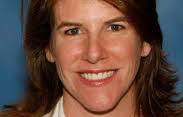by John Trybus, Managing Director
What comes to mind when you see the iconic American Red Cross logo?
Hope? Assistance? Blood donations? Safety? Elizabeth Dole?
That simple emblem has become a universal symbol of humanitarian assistance to many and arguably one of the strongest – and longest serving – nonprofit brands today.
We all know that the American Red Cross does amazing things thanks to its network of 186 Red Cross and Red Crescent societies and more than 13 million volunteers. But you may be surprised to learn about the organization’s focus on international communications as I was.
Social strategist Jana Sweeny, director of international communications, is the force behind making sure the American public is informed about the organization’s work overseas. From disaster response in Haiti to preventing measles in Africa and more, the American Red Cross is as busy as ever.
“I think most people are familiar with our domestic work and many people are familiar with the work of other Red Cross societies throughout the world, but often don’t realize that the American Red Cross is involved in projects and programs overseas,” Jana explains. “Helping to inform people about that work is a primary responsibility on an ongoing basis.”
Jana has a long history with the American Red Cross but her path to international communications was an unusual one. How unusual? She has a degree in archaeology and historic preservation. She became involved with the organization as a volunteer when she lived overseas in such places as South Korea.
“The work that we do is so compelling and you have an impact every day on the lives of others and on the well-being of others that I couldn’t turn away,” Jana says of her long affiliation with the organization. “There’s always been a new avenue and a new exciting opportunity.”
Here’s a preview of how the American Red Cross approaches international communications:
- A war room/newsroom mentality. The organization is so large and multi-faceted that it’s impossible for any one person to know all of the projects in operation. Coordination is key and that comes in the way of a daily communications team meeting to ensure that the American Red Cross is speaking with voice and focusing on the organizational priority of the day. “It’s a really nice way to get on the same page each morning but to also hear what everyone else is working on,” Jana explains. “Sometimes there are overlapping moments…and by knowing about them we are able to tell the [American Red Cross] story more holistically.”
- Sometimes you have to sling ice. Literally. Working in disaster zones requires flexibility and a communicator’s role on-site cannot always be a passive professional one. “You have to be incredibly flexible because you never know where or if you’re going to be sleeping and what the conditions are going to be like,” Jana says. “You have to understand the story that you’re telling and sometimes that requires stopping the storytelling and helping in some way because that’s the most urgent need at that moment.”
- Invest time in listening. With so many diverse yet important stakeholders, people are talking about the American Red Cross worldwide and through multiple channels. In order to communicate with them effectively, Jana believes that there is no substitute for first listening to them and she sees other organizations not properly investing in this principle. “It’s about listening to what your constituents want to know about and finding that human place to have that conversation with them,” she advises. “I still think there are a lot of organizations – not only in the nonprofit world – who are pushing. All they’re doing is putting information out there for people to take instead of finding that moment to talk to those that are engaged and listening.”
Listen to my interview with social strategist Jana Sweeny to hear more about the international communications work of the American Red Cross and insights into what it’s like to work in a disaster zone and how to inspire Americans to care in times of need, among other topics.

